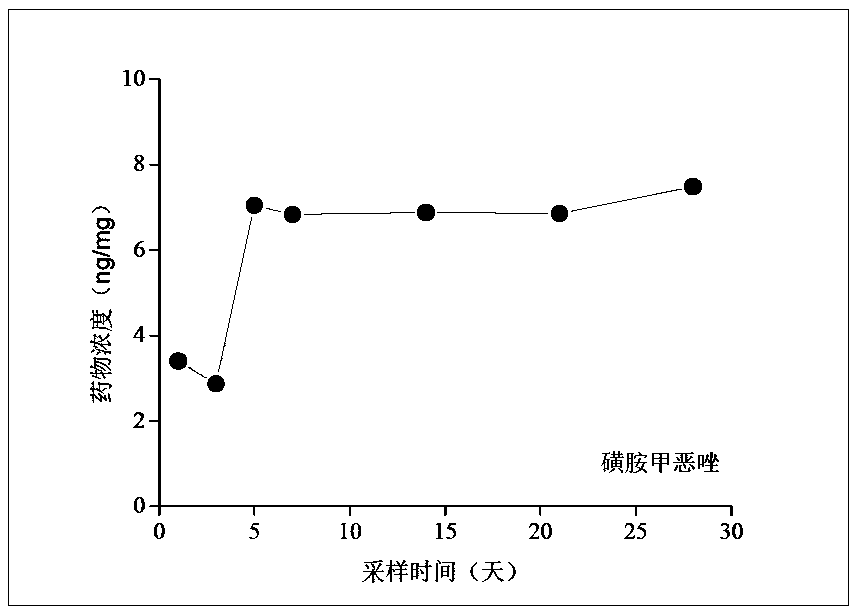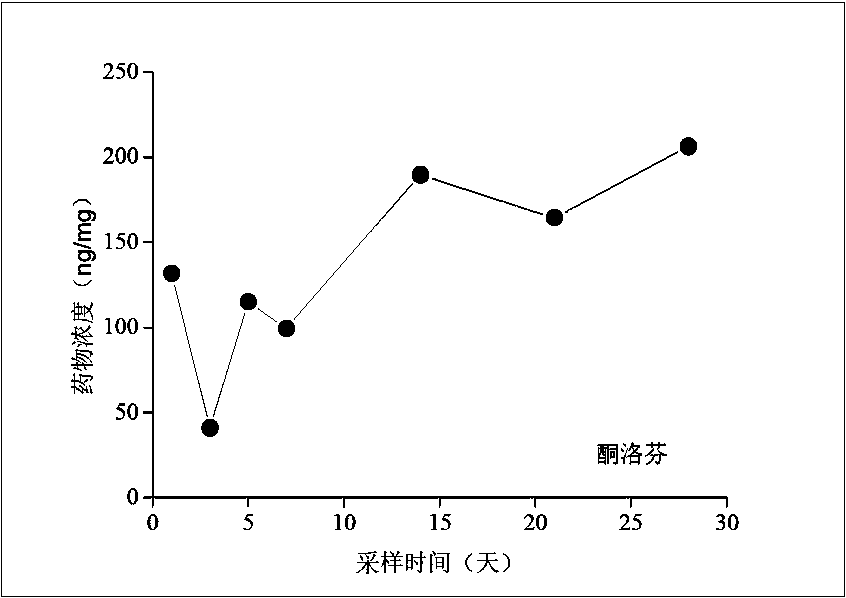A water quality monitoring-oriented trap for trace polar organic pollutants
A technology for polar organic pollutants, applied in the preparation of test samples, sampling devices, etc., can solve the problem of poor adsorption range and adsorption efficiency of polar organic pollutants, and no report on passive sampling technology for polar organic pollutants , Sampling cannot be carried out normally, etc., to achieve the effect of efficient ecological risk assessment, sampling technology principle and sampler making simple, shortening sample collection time
- Summary
- Abstract
- Description
- Claims
- Application Information
AI Technical Summary
Problems solved by technology
Method used
Image
Examples
Embodiment 1
[0026] Example 1: Enrichment kinetics experiment of typical PPCPs drugs in water by polar organic pollutant trap
[0027] Select a large-scale urban sewage treatment plant in Shanghai, set up a point in the water treatment process section, suspend the sampling device of the present invention in the water, and place it for 1 day, 3 days, 5 days, 7 days, 14 days, and 21 days respectively. Day and 28 days later, it was removed for elution analysis. The invention can enrich more than ten kinds of pharmaceutical polar pollutants at the same time, and can enrich organic substances that cannot be enriched by active sampling method (solid phase extraction). From the cumulative enrichment concentrations of five polar drugs with high detection rates, sulfapyridine, sulfamethoxazole, ketoprofen, fluthiamphenicol and ofloxacin ( figure 2 , 3 , 4, 5, 6) It can be seen that these five pollutants can reach the enrichment equilibrium within 4 weeks or even a shorter period of time.
Embodiment 2
[0028] Example 2: Broad-spectrum adsorption verification experiment of polar organic pollutant trap
[0029] Take the polar organic pollutant trap on the 28th day in Example 1, analyze the polar organic pollutants adsorbed by it, and take 5 L of water samples on the spot on the 28th day, and carry out enrichment by solid phase extraction after transporting back to the laboratory , concentration, determination. And compare the polar organic pollutants detected by the two methods. Table 1 shows the comparison of the implementation steps of solid phase extraction and polar organic pollutant trap methods and the comparison of the differences in the types of pollutants screened.
[0030] Table 1 Comparison of the list of pharmaceutical pollutants screened by different monitoring methods in a certain urban sewage plant
[0031]
[0032] It can be seen from the above table that the sample pretreatment process of the polar organic pollutant trap is simpler, and more pollutants ca...
PUM
| Property | Measurement | Unit |
|---|---|---|
| pore size | aaaaa | aaaaa |
Abstract
Description
Claims
Application Information
 Login to View More
Login to View More - R&D
- Intellectual Property
- Life Sciences
- Materials
- Tech Scout
- Unparalleled Data Quality
- Higher Quality Content
- 60% Fewer Hallucinations
Browse by: Latest US Patents, China's latest patents, Technical Efficacy Thesaurus, Application Domain, Technology Topic, Popular Technical Reports.
© 2025 PatSnap. All rights reserved.Legal|Privacy policy|Modern Slavery Act Transparency Statement|Sitemap|About US| Contact US: help@patsnap.com



